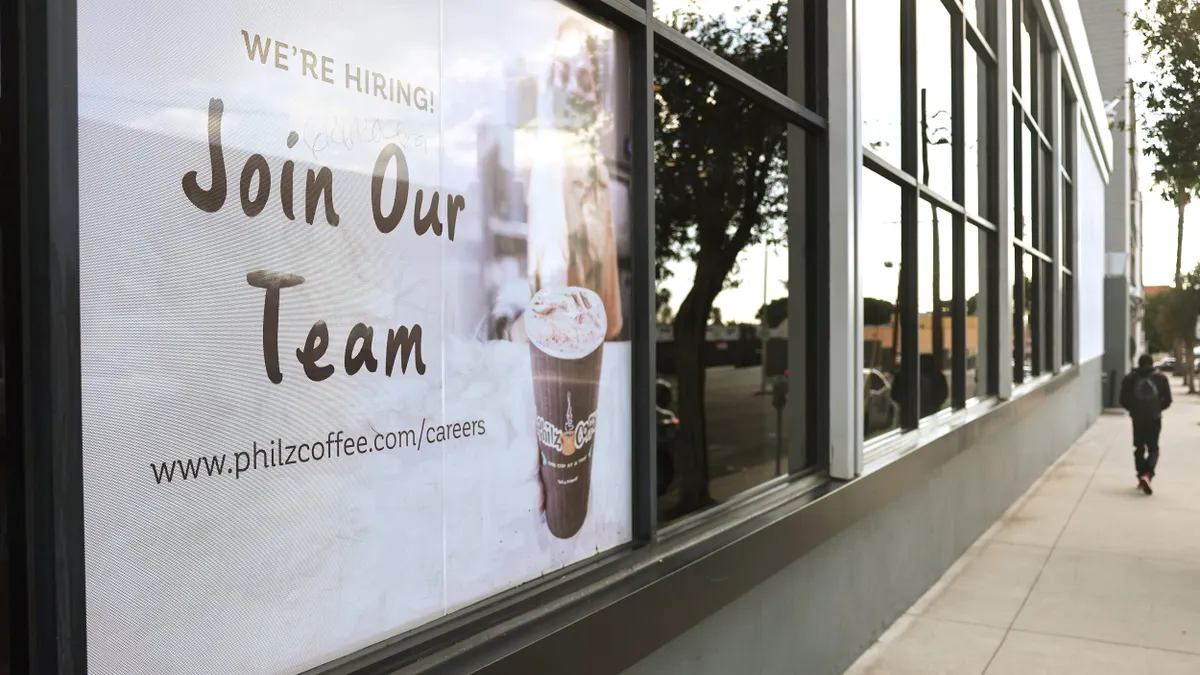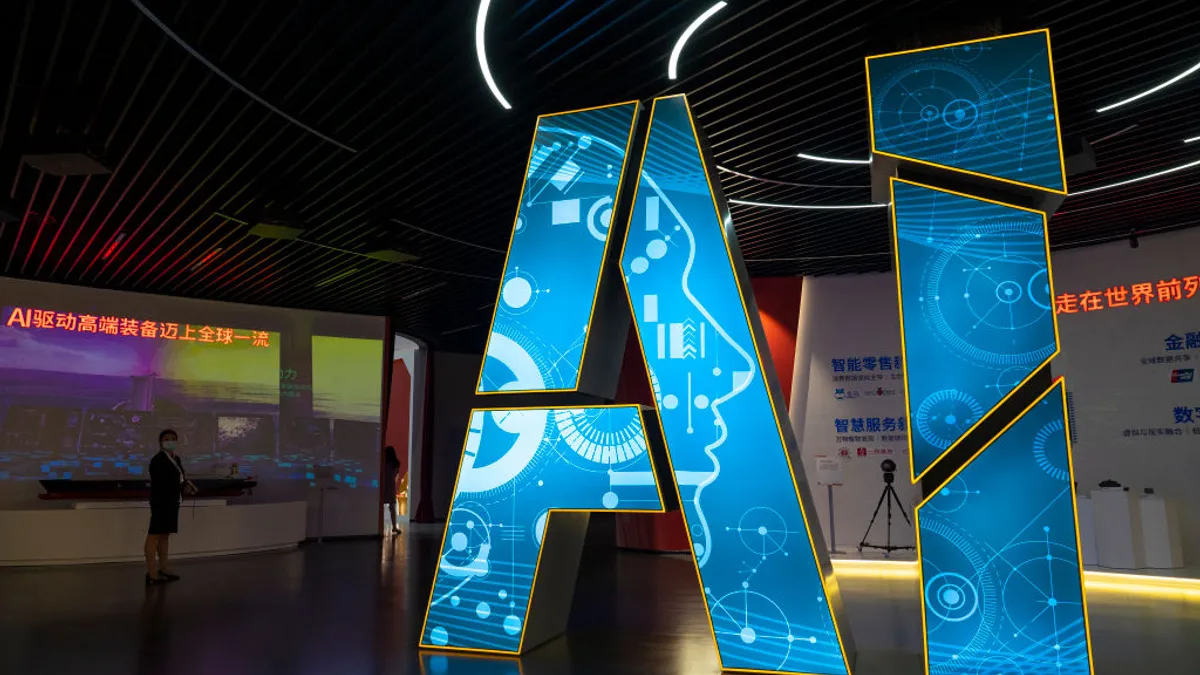The gig economy — also known as the contingent workforce or, if you're U.S. Department of Labor Secretary Alexander Acosta, the entrepreneurial economy — is perhaps the most well-known talent sourcing disruptor across industries.
Freelancers have flooded the market, and companies are scrambling to hire them for projects of all types thanks to their expertise and affordability. Estimates vary, but the contingent workforce is expected to dominate somewhere around 50% of the talent market by 2020.
But this sudden explosion of cheap talent has created a serious HR problem: some employers have no idea who exactly works for them. Contingent worker acquisition is often the responsibility of procurement or individual managers, rather than an HR process — and that is increasingly a liability, experts told HR Dive.
“The challenge is that you are disengaging a lot of the workforce,” Jeff Antonelli, director of strategy and human capital at Berkeley Research Group, said. “The more contingent workers we put in place, the harder it is for HR to add value and gauge that segment.”
As talent management shifts from staffing full-time squads of workers toward something more akin to project management, companies are reconsidering what their hiring processes look like across the spectrum, from contractor to executive. And for many, that means reconsidering what it means to be an agile business.
Do you know who your talent is?
To consider any strategic shifts, employers must be able to say with confidence that their metrics accurately reflect their actual workforce, both contingent workers and employees. Easier said than done, unfortunately.
“It’s not necessarily just an issue with contingent workers,” Neil Shastri, director of the talent, rewards and performance sector at Aon, told HR Dive. “We studied a company … that did not know where their people were.” And these were full-time workers, he added.
In a business atmosphere that’s increasingly allergic to siloing, an HR department must have a grasp on where people — and therefore, skill sets — may be found across an organization. It’s a mindset change that many may not be prepared for.
Shastri spoke of another company that realized it was hiring in one section of the company for the same exact skill sets that they already had elsewhere within the organization. “Because they didn’t know,” he said. “HR didn’t have a good handle on who they have, and what they are paying them.”
HR is, by now, quite familiar with the skills gap, but it is one reason why thinking has shifted from maintaining headcount to deploying skills, be it through the employee or contingent channels. Skills are portable and marketable. Workers, in response, have dropped traditional employment in favor of contingent, flexible work they can do on their own time. Employers have been happy to adjust to this new phenomenon, as it's generally less expensive to engage contractors who don't require benefits or other costly retention tools. But employers are still catching on to the real paradigm shift this change has created.
How do you make sure you have the right person doing the right thing? How do you make sure projects are moving efficiently, and that there isn’t bloat? How do you scale and adjust? And how do you manage a workforce full of people with multiple proficiencies and skill sets that could potentially be of use to an employer?
“I would call it the network effect,” Wade Burgess, CEO of Shiftgig, said. “It’s a many-to-many problem, not a one-to-one problem.” Many people have skills they could be applying across various industries in various seasons. How are employers supposed to deal with that?
It starts with data, Burgess says. Talent acquisition officers, now more than ever, have a “massive need for data and insights” so they can stay on top of what the workforce looks like now and will look like in the future.
HR may need to be in closer talks with procurement, too.
The relationship with procurement
Now that the contingent workforce is fully in the picture, the concept of buying talent (as opposed to the traditional sense of talent acquisition) has forced businesses to reconsider how and through which departments talent is obtained. The very structure of talent agreements has to shift to accommodate contract workers but also protect the company, Antonelli said. And for many companies, buying talent must run through procurement channels.
The more contingent workers we put in place, the harder it is for HR to add value and gauge that segment because you create different environments.

Jeff Antonelli
Director of Strategy and Human Capital, Berkeley Research Group
Procurement comes with its own bureaucracy; it tends to be slower and more conservative in how it moves, Antonelli said, which may not jive with what HR is used to when acquiring talent. On top of that disconnect, employing contractors through procurement could create a split in employee experience that further challenges HR.
“The more contingent workers we put in place, the harder it is for HR to add value and gauge that segment because you create different environments,” he added. Procurement could be adding workers that don’t have the same engagement with the core company product or brand.
The ties between procurement and HR will likely only grow stronger as HR seeks to close that engagement gap.
“HR has been running around asking for millions of dollars to implement global HCM solutions,” Brian Proctor, director of human capital at Deloitte Consulting, told HR Dive. “You have to go through procurement often to buy these solutions. So what about contingent workers? We want to put them in that investment you are making.”
The growing, cross-department relationship with procurement reflects how HR must engage various departments and leaders across the entire company to better budget costs and manage risk, especially the CFO, Shastri said.
And the time to improve those relationships is now. The business world is moving too fast, Antonelli said.
“You would never think of contingent work seven years ago. You’d buy the talent full-time,” he said. “You can never predict what is needed at any given time, it is moving so fast.”
Changing the face of management
As the business evolves, HR has had to shed its perception as the ‘soft’ department — and nothing quite exemplifies that shift like the onset of contingent workers. For one thing, few departments but HR are prepared to handle the liability that naturally comes with a contingent workforce, Proctor said.
But as the models shift, HR will increasingly be responsible for obtaining the right workers at the right time for the right projects. A diverse selection of workers — employee and contingent — will be key for HR to remain a strategic arm of the company in the long run.
“Strong HR departments have embraced the challenge and employ skills the organization didn’t have 12 months ago and do it quickly, and you can only do that if you have a diverse labor pool to meet your needs,” Proctor said.
To accommodate this shift, HR will actually need to become even more people-oriented, rather than process-oriented, in some respects. Technology may make the seeking and hiring of contingent workers faster, but employers can’t forget the power of a personal, human touch even when onboarding contingent workers, Antonelli said.
“[Onboarding] can be done virtually, but successful projects will see lift faster if there is more engagement upfront,” he added. Upfront engagement is good for the employer brand, overall — especially important now that that brand will be touched on by more people, more often. This demand will put more pressure on managers, however, who may need more training to accommodate their new role.
Antonelli mentioned that one large software firm in Seattle with which his company worked is seeking to redefine the role of the manager entirely.
A person who believed that that was what they were going to do and focus on one particular thing is obsolete today. They have retooled themselves over and over again.

Wade Burgess
CEO, Shiftgig
“Traditionally, managers spend 50% of their time doing admin work and maybe 25% of their time actually with employees,” he said. “The shift is to put 100% of their time to coaching and leading, and putting the work that a traditional manager does to a shared service environment.”
The focus will likely shift to skills, rather than individuals; but if that sounds like a more robotic way of doing things, consider that individuals often hold many skills. Managers will have to recognize the skills each employee has, which skills they want to develop and how they want to work — not exactly a short order. But the change will be necessary to create a more engaged workforce and build a company agile enough to adapt to any coming shifts.
“A person who believed that that was what they were going to do and focus on one particular thing is obsolete today. They have retooled themselves over and over again,” Burgess said. “So it’s a workforce that is really about agility.”
If employers want to keep up, they’ll have to adjust.




















